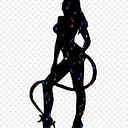Sometimes your hair just doesn’t look or feel the way that you think healthy hair should, which could make you question your hair’s health status. But there are a number of signs that your hair might not be as unhealthy and damaged as it seems.
Given all of the obvious things that hurt our hair health, it’s important to get familiar with the characteristics that can help you determine what, exactly, is going on with that mane of yours. Focusing on length and thickness are steps in the right direction, but our hair can let us know that it’s thriving in subtler ways as well.
Instead of beating ourselves up over ways we damage our hair, I think it’s high time we celebrate the route to healthy hair for a change. If any of these nine signs of strong and healthy locks describe your mane, a slow-motion hair flip is in order.
Given all of the obvious things that hurt our hair health, it’s important to get familiar with the characteristics that can help you determine what, exactly, is going on with that mane of yours. Focusing on length and thickness are steps in the right direction, but our hair can let us know that it’s thriving in subtler ways as well. Check out these six signs to see where your locks fall.
- Shiny and Smooth. If hair looks silky, it’s a safe bet that it’s healthy too. That shiny — and sought-after — texture is the result of a smooth, flat-lying cuticle. The cuticle — our shingle-shaped outer layer — has the job of protecting a sponge-like shaft beneath and does its best work when its “shingles” are sitting tightly overlapped on top of the cuticle. And when they are, the cuticle will reflect light, and your hair looks oh-so-shiny.
- Good Elasticity. When you achieve that gorgeous bouncy style that lasts all day, you have your hair’s great elasticity to thank. It’s the quality that holds curl and makes all your hairstyle ambitions — voluminous blowouts to tight curls — a possibility. Elasticity is the measure of your hair’s strength and having poor elasticity can lead to excess breakage–and frizz. To check elasticity, start with wet hair. Take a strand, and stretch ever so slightly. If the strand bounces back into place when you let go; you’re in great shape!
- Shed A Few Strands Daily. Hair grows in cycles and each follicle has a growth stage that can last from two to eight years. After that time, the strand falls out and a new hair grows. For most people with healthy hair, that means that 80–90% of their hair is growing at one time and that they can expect to lose up to 125 hairs each day. Regularly losing more than that can be a sign of a dermatological issue or other health problem; you should consult a doctor.
- Detangles Easily. The smooth surface of a closed healthy cuticle makes it easier to brush through. When the cuticle is raised and unhealthy, hairs tend to get caught on one another and start to form tangles. The rough texture of the hair’s outer layer makes it much more difficult to separate each strand, and when it does separate easily you know your hair is doing well.
- A Little Moisture Doesn’t Make You Frizz. Frizz occurs when water penetrates the sponge-like shaft below, which can happen more easily when the cuticle is damaged and lifted. When the cuticle is lying flat and tight to the shaft, it’s harder for moisture to break that barrier and be absorbed. Healthy hair isn’t as reactive to moisture in the atmosphere.
- Minimum Breakage. Excess breakage is a sign of unhealthy hair. When tresses are overworked and over-exposed, they become brittle and easily break off leaving rough raw ends all over. Check tresses around your face to see how your hair stacks up as those pieces usually endure the most heat styling and acquire the most damage. If you’re hard-pressed to find much breakage there; congratulations, you’ve got very healthy hair!
Follow these simple tips from dermatologists to maintain healthy hair
